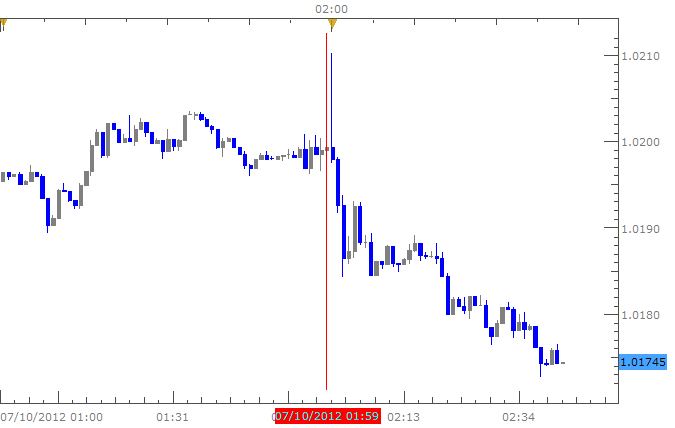How to trade the Australian dollar
Post on: 3 Июль, 2015 No Comment

One of the cardinal rules of trading is to trade what you know, and no one knows the Australian economy better than the people who live in Australia. For example, only Australians really know when the floods started and how bad the situation really was at the time. International media didn’t pick up on the story until it became very serious and even then the coverage was typically allocated to the second and not the front page of the newspapers. Being on the ground gives Australians a huge home-turf advantage that allows them to know exactly how the economy is doing better than anyone else. Having travelled to Australia often over the past two years and seen all of the for-hire ads in storefronts and newspapers, I knew that the Australian labor market was very strong. In contrast, many Australians were surprised to hear about the degree of weakness in the US economy and how difficult the labor situation really is, even today. Given the strength of the Australian economy last year, it is hard for some people to believe that the rest of the world is not enjoying the same degree of growth. However, 2011 has not been so kind to Australia. The floods took a big toll on the economy and only the people in Australia will really know how much contribution the recovery efforts will have on the Australian economy. Everyone else will hear it second hand, because by the time it hits their radar and the news makes headlines in the US and Europe, the recovery will be already underway.
Believe or not, this intimate on-the-ground knowledge of how the economy is doing can be very useful for making investment and trading decisions. The Australian dollar is a very active currency that can provide plenty of trading opportunities. Depending on your knowledge of the markets and whether you are interested in holding your positions for a short or long time, there are many different ways to trade the Australian dollar.
The other alternative would be to trade the Australian dollar based upon chart patterns or technical analysis. Since currencies trade 24 hours a day, five days a week, technical analysis is very popular because there are a lot of data points, increasing the statistical significance of each pattern. Within every timeframe of a typical currency pair, a trader can apply any technical indicator, chart pattern, or technical strategy that they may have learnt or used in shares trading. The more popular technical indicators include Stochastics, MACD and moving averages. Currency traders also regularly look for chart patterns such as head-and-shoulders, double-bottoms and tops, and wedge formations. The list goes on; anything from Bollinger bands to Fibonacci retracements are just as commonly used by professional forex traders as shares traders. There is, however, one nuance that technical traders need to be aware of when trading forex – there are no volume indicators in currencies because it is an over the counter and not exchange traded market.
Pick the Right Currency
When trading the Australian dollar, it is also important to think about which currency you would like to buy or sell the Aussie against because the US dollar is not your only option. Nearly all foreign exchange providers allow traders to take positions in the Australian dollar against the euro, British pound, Japanese Yen, Canadian and New Zealand dollars. The reason why you may want to look beyond the US dollar is because developments in the US economy can often overshadow what is happening in Australia and, therefore, it may be smarter to take your view on the Aussie against another currency. For example, you may travel to New Zealand often and have a good sense of how the New Zealand economy is performing relatively to Australia’s, which could be turned into an AUD/NZD trade. Alternatively you may have a view on the problems in Europe and what will transpire next, which could be turned into a EUR/AUD trade. Currency pairs that do not involve the US dollar are known as the “crosses”. Crosses can provide more diverse trading opportunities but the spread, which is the cost of trading, could also be larger.
How to Get Started
If you are interested in trading forex, the best thing to do is to contact a foreign exchange broker that has an office in Australia and is regulated by the Australian Securities and Investments Commission. Ask them for more information on how to trade currencies and open up a demo, which is a practice trading account and start plugging away. There are many books, courses and free resources that can teach you how the market works and your broker can send you in the right direction. Currency trading is here to stay and if you are interested in diversifying part of your portfolio away from shares trading, then the forex market would be worth considering. Forex trading can be risky because of the high degree of leverage and this makes it extremely important for everyone to understand the risks and rewards of forex trading before opening up a live account.














